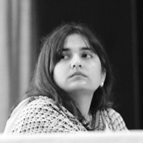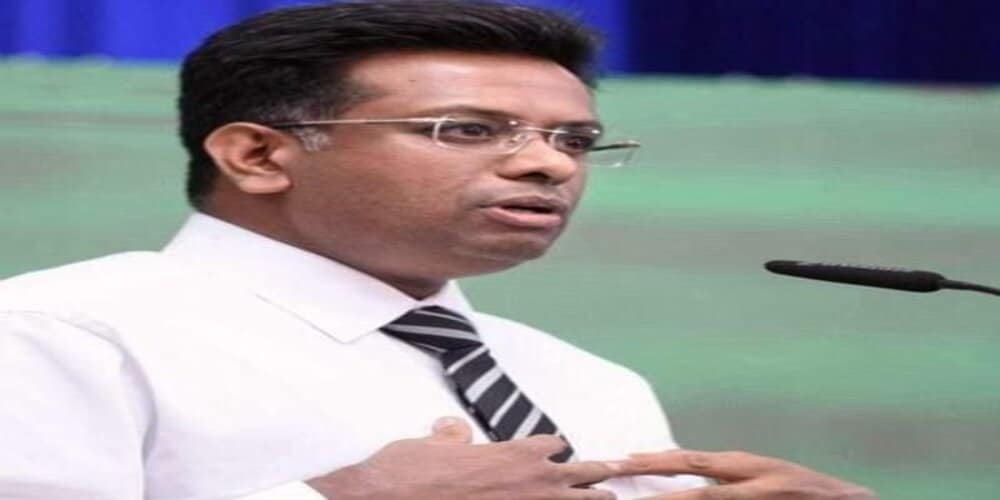As Delhi’s mobility crisis deepens pollution levels, E-Rickshaw drivers bear the cost of clean commuting
With over 1.1 lakh registered e-rickshaws, drivers bear the brunt of toxic air exposure while navigating Delhi’s congested streets
Author
Author
- admin / 1 year

- 0
- 9 min read

Author
New Delhi: “Badi gaadiyaan aati hain aur dhool udaake chali jaati hain hamare upar. [Big vehicles come, stir up dust, and leave it settling on us],” Ashraf Ali, an e-rickshaw driver in Delhi’s Nizamuddin area laments.
Ali leaves for work at 7 AM and drives his e-rickshaw in the city till 10 PM on all working days.
“By evening, my eyes start burning,” he says, adding that he has frequent coughs and headaches, particularly during the pollution heavy winter months.
E-rickshaw were meant to be solution to the city’s toxic air; however their drivers, like Ali, remain some of the most vulnerable to the dangerous impacts of air pollution, caused primarily by vehicular pollution, because of prolonged exposure.
 Ashraf Ali, an e-rickshaw driver drives through a crowded road near Hazrat Nizamuddin area in New Delhi. (Image credit: Sneha Richhariya for First Check)
Ashraf Ali, an e-rickshaw driver drives through a crowded road near Hazrat Nizamuddin area in New Delhi. (Image credit: Sneha Richhariya for First Check)
Vehicular pollution is the biggest challenge for Delhi
Delhi is a hub for personal motorized vehicles in India. Total motorized vehicles in Delhi are 79.45 lakh. Cars and jeeps accounted for around 26% of the total registered motorized vehicles, whereas two wheelers are about 66.64% of total registered vehicles.
However, no limits on registration of new motorized vehicles results in the rise of toxic pollution levels, as vehicles emit pollutants, especially from diesel and petrol, as well as from burning coal, which contain toxic particles with heavy metals attached. These metals, when burned, become airborne as part of PM2.5 particles.

E-rickshaws parked on the roadside near Jamia Millia Islamia, New Delhi. (Image credit: Sneha Richhariya for First Check)
Sunil Dahiya, founder and lead analyst at think-tank Enviro-Catalysts who has studied air pollution for over a decade explained that air quality is typically measured at about meter height above the ground, but people primarily breathe at around 5 to 6 feet.
“This makes the transportation sector particularly concerning, as vehicles emit pollution at this level, which people are directly exposed to while walking on roads and footpaths,” Dahiya said.
“While other sources like the power and industrial sectors are also significant contributors to pollution, the transportation sector is far more severe owing to its immediate impact on public health,” he added.
In fact, a recent study by the Delhi-based non-profit Centre for Science and Environment (CSE) revealed that vehicular pollution continues to be the leading source of pollution in the city, contributing to 51.1% of emissions from local sources.
Dahiya explained that the combustion of fossil fuels releases more toxic particles, and the more complete the combustion, the smaller the particles become. Smaller particles penetrate deeper into the body, causing more severe health effects.
“Unlike larger dust particles, finer combustion-generated particles, often carrying carcinogenic heavy metals, deeply penetrate the respiratory system, enter the bloodstream, and affect every organ, “ adds Dahiya.
A study published in Nature Communications provides the first direct evidence that particles can reach the part of the placenta that nourishes the developing fetus. This could be the initial step in understanding why high pollution is associated with a higher risk of miscarriage, premature birth, and low birth weight.
Long-term exposure can result in irreversible damage, such as compromised lung development in children and higher incidences of neurodegenerative conditions like Alzheimer’s.
And the situation may only get worse, with more people shifting to private vehicles.
“The shift from public transport to private vehicles in Delhi is largely driven by rising incomes and people’s aspirations to own cars, but public transport services, such as buses and metro networks, have failed to keep up with population growth, contributing to congestion,” said Sayan Roy, Programme Manager, Sustainable Mobility & Clean Air, Centre for Science and Environment (CSE).
According to Roy, the city’s public transport infrastructure hasn’t scaled up with the rapid increase in population, which has exacerbated issues like congestion. Metro ridership data has been criticized for potential inflation due to changes in how it is calculated, and unreliable bus services further discourage usage, pushing people towards personal vehicles.
Commuting by public transport in Delhi has also become increasingly expensive, as highlighted by CSE’s report. The cost per kilometer for different modes of transport is as follows: two-wheelers at Rs. 16, cars at Rs. 35, buses at Rs. 40, and the metro at Rs. 47.
First Check reached out to Sanjiv Kumar, Chairman of Delhi Pollution Control Committee, A.K.Singh, Principal Secretary (Environment & Forest) at the Department of Environment, Government of NCT of Delhi and members of the Delhi government for comments on why the strategies adopted by the Delhi government are unable to control vehicular pollution in the city. We will update the story when we receive a response.
The cost of day-long exposure to Delhi’s air
E-rickshaws were introduced by former Chief Minister Sheila Dikshit as a solution to this vehicular pollution and as a step towards making the city “pollution-free” during the 2010 Commonwealth Games in Delhi. Arvind Kejriwal, Dikshit’s successor, also committed to improving Delhi’s air quality, partly by expanding the e-rickshaw fleet. The government in Delhi continues to highlight e-rickshaws as a key solution to Delhi’s pollution problem, introducing subsidies, public charging stations, and even battery swapping shops.
Today, the city is served by thousands of e-rickshaws; the Delhi Economic Survey 2022-23 reporting that 1,14,848 E-rickshaws have been registered up to December 2022, a sharp increase from just 25 in 2010.
However, today, the drivers of these e-rickshaws are one of the biggest casualties of the city’s toxic air.

Anwar, an e-rickshaw driver, tries to spot commuters looking for a ride near the crowded Okhla Vihar Metro station in New Delhi. (Image credit: Sneha Richhariya for First Check)
Anwar, a 58-year-old e-rickshaw driver, cranes his neck to spot commuters looking for a ride near the crowded Okhla Vihar Metro station in Delhi. Many e-rickshaws stand in line along with several private vehicles, almost choking the road; a familiar sight for Anwar, now that he has spent at least two decades navigating the city’s chaotic para transport system.
But it’s not just the traffic that’s taking a toll – it’s the relentless, choking pollution. When the big vehicles pass, they stir up dust that settles on all the e-rickshaws as they wait for riders.
“Car toh hain nahi, ki sheesha band kar liya [This is not a car where we can shut the windows],” Anwar says.
The other e-rickshaw drivers nod in agreement, as Anwar says, “Who can stop the big vehicles? They emit so much smoke.”
Many e-rickshaw drivers tend to fall ill during the winter months, according to Dr Yasmeena who works as a medical officer in-charge at a Rural Health Training Center, affiliated with Jamia Hamdard University.
Her clinic is located in Yamuna Khadar near Okhla Vihar area, and primarily serves people within a 5-kilometer radius. Most of the visitors to the clinic are those with full-day exposure to the city’s air, such as labourers, ragpickers and e-rickshaw drivers.
“During the past two months, when pollution levels have risen, we’ve noticed a shift in the type of cases,” Dr. Yasmeena said.

Patients visit the Rural Health Training Center, located in Yamuna Khadar, New Delhi. Credits: Dr Yasmeena
“Even those who don’t usually have breathing issues are reporting problems like coughs, colds, and difficulty breathing,” she added.
Doctors warned that people associate risks with short-term seasonal exposure, especially in winters, and ignore the effects of long-term exposure – which can include severe health conditions like chronic obstructive pulmonary disease (COPD), lung cancer, hypertension, and heart diseases.
“We often don’t associate some illnesses to air pollution but exposure in the long term can even cause diseases like Dementia, where you start to forget things,” Dr Nikhil Modi, Senior Consultant, Department Of Respiratory, Critical Care and Sleep Medicine, Apollo Hospital in New Delhi, said.
“Pollution also causes diseases such as stress and insomnia, which exacerbate these conditions,” he added.
However, in a sort of catch-22 situation, one of the best solutions for the kind of health hazards that e-rickshaw drivers face, is to promote greener transport options like e-rickshaws.
Should more e-rickshaws be integrated into the city’s transport system?
While eco-friendly solutions like e-rickshaws are seen as potential alternatives to reduce pollution, their lightweight design and instability on wider roads present challenges.
“E-rickshaws are fine for shorter, less trafficked routes, but they struggle on busy roads where speed and stability are crucial,” said Roy from CSE, who studies sustainable mobility.
“Although the government has been cautious about integrating them into busy areas, improved designs and the growing availability of electric vehicles could lead to their wider adoption.” he added.
On the question of allowing e-rickshaws into less crowded and more “posh areas” of Delhi, Sunil Dahiya says, “There is a need for integrated planning to ensure that different modes of transport, such as metro, buses, and e-rickshaws, complement each other rather than compete.”
He stresses that e-rickshaws should not be deployed everywhere, especially in areas already served by large buses and metros. “They need to fill in the gaps left by metro, big buses, and other services,” he notes.
Additionally, Dahiya highlights the necessity of rationalizing road space usage, following India’s National Urban Transport Policy.
According to the Nation Urban Transport Policy, first right to the road space should be to people who walk, second one to the people who cycle, third one to the public transportation modes, and then whatever remains, a portion of that can be utilized for the prioritized modes of transportation.
“But it’s the other way around in our cities,” he says.
(Do you have a health-related claim that you would like us to fact-check? Send it to us, and we will fact-check it for you! You can send it on WhatsApp at +91-9311223141, mail us at hello@firstcheck.in, or click here to submit it online)










